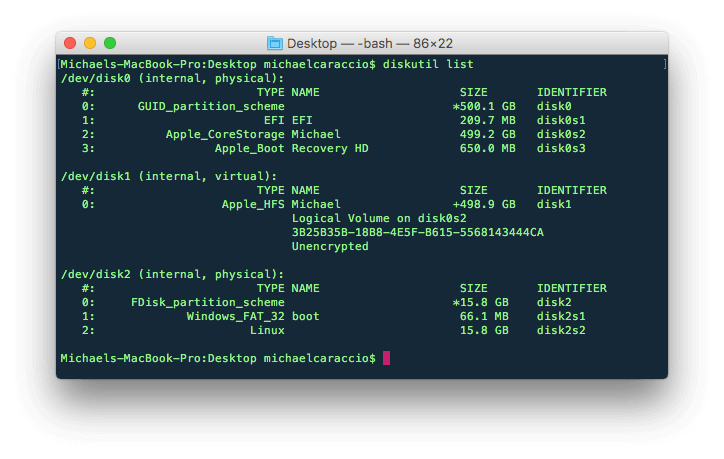

After entering it, you might be asked to enter an admin account’s password. Note that the command above uses sudo, so it requires administrator privileges to work. Sudo ext4fuse /dev/disk3s1 ~/tmp/MY_EXT_PARTITION -o allow_other Use the command below to mount it as a drive named MY_EXT_PARTITION in the tmp/ directory of your home directory: Let’s say the desired partition has an id of disk3s1, and it is mounted on /dev.You’ll have to identify that partition by yourself based on its size, name etc as listed by diskutil. Take note of the id of the partition you wish to mount.In the terminal, enter the command below to see a list of all the storage devices attached to your computer:.Plug in the hard disk drive or storage device whose partition you want to mount.
#Macfuse mount ext4 install#

#Macfuse mount ext4 mac os#
Mounting an ext2/ext3/ext4 partition on Mac OS Nevertheless, here is the best info I found about how you can mount an ext2/ext3/ext4 partition on a Mac. Even the paid solutions I read about were not totally reliable and were known to corrupt people’s storage devices. So I consulted Google for a solution but found that there was no quick, pretty and free software for this.

So if the Mac OS can mount the filesystems of Windows (NTFS and FAT32) by default, it should be able to mount the ext filesystem too, right? Wrong. I mean, at its core, Mac OS and Linux both belong to the Unix family of operating systems ( proof) and ext is the default filesystem of Linux. I have been using a MacBook for a while now but was shocked to learn that the Mac OS can’t mount ext2/ext3/ext4 file systems by default.


 0 kommentar(er)
0 kommentar(er)
